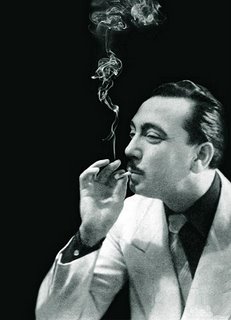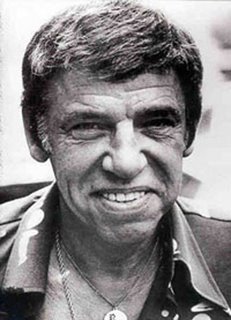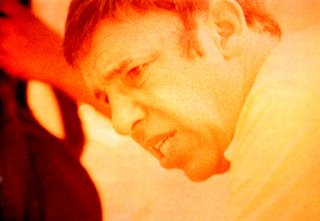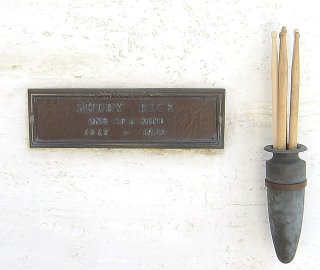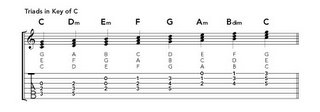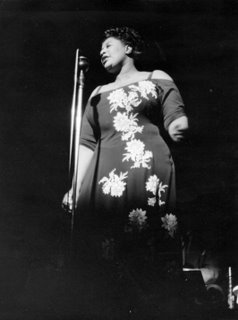[NOTE: The fifth post in the Musical Theory series of posts is below.]
Name: John Francis Anthony Pastorius III
Born: December 1, 1951
Died: September 21, 1987
Instrument: Bass
From Drums to Bass:Jaco didn't start out as a bassist. When he as 16 he used to be the drummer for "Las Olas Brass" in Fort Lauderdale. That was, until a far better drummer Rich Franks moved into town and the band asked Jaco to step down. He did, and while attending one of their rehearsals with Rich on drums, the bass player left rather abruptly. Jaco picked up the bass and said he'd like to play for the band, and of course he was told he could, but he had a week to learn the material.
"...the moment I picked up the bass, I knew it was my instrument." (Jaco)Jaco would then spend time during lunch and after school at a music store nearby, where inbetween customers the owner would practice his guitar and answer Jaco's many questions. Jaco quizzed the owner about the left hand, arpeggios, fingering, and so forth. He learned the material, and joined the band as their bass player.
There are many rumors out there at Jaco just picked up the bass and played it intuitively without any practice. This is of course about as true as we all just stood up one day when we were children and started walking without any work at all. Jaco used to carry his bass with him everywhere and practice, inbetween mouthfuls of cereal, while talking to people, watching television, all the time. Jimi Hendrix was rumored to be similar in that respect, even taking his guitar into the bathroom with him.
Of course, the best way to find out how a man behaves is to ask the woman that lives with him. In the words of Jaco's first wife, Tracy:
"Jaco practiced all the time but never late at night. He rarely stayed up late unless he had a gig - he loved getting up early. But, whether he was sitting in the back yard soaking up the sun or watching Star Trek or Jeopardy on TV, his bass was always in his hands. It never bothered me - I don't know why - maybe because my father was a jazz musician too. I've read where people have said he never practiced, but that wasn't the case when I was with him. All his early works were written on the bass because we couldn't afford a piano. Then he actually started writing on a little toy piano my mother had given our daughter Mary for her birthday. He had never had a
music lesson and I remember my mom showing him where "C" was on that little toy piano."
 Family Man:
Family Man:Jaco was a very caring person, loved to be close to nature, and of course his family. Pictured on the right is Ingrid, his second wife, with his for children: John, Mary, Julius, and Felix. Before anyone asks the forever predictable question, yes, they all play musical instruments. John plays drums and piano recreationally, Mary is a singer-songwriter that plays piano, Julius plays drums, and Felix bass. John and Mary were born to Tracy and Jaco, and Julius and felix to Ingrid.
There is a rather cute story surrounding the song
Portrait Of Tracy, obviously named after Jaco's first wife. Once again in Tracy's words:
"I'll tell you the background of that title. You are probably all bass players and whether you realize it or not, it is not always the most enthralling thing in the world to listen to a bassplayer practice - riffs - scales - all that stuff. It never bothered me at all, but to say it was engrossing would be pushing it. Well, one day Jaco started practicing a new song and it was like nothing else I had ever heard him practice. It was so different and hauntingly beautiful. It got so that everytime I went to take a bath I would holler to him, "Jaco, play my bathtub melody!" because it made me feel so relaxed. So for months that is how it was referred to between us - the bathtub melody. I did not know until the day his first album came out and saw it that he had called it "Portrait of Tracy". So to say I was the inspiration for it may be an exageration but thank you. Years later people who knew us knew he was pissed at me whenever he started playing it with that fricking fuzz tone on!" Weather Report etc:This band was originally a spin-off of the musicians associated with Miles Davis, and the Bitches Brew era work. It soon developed more of a funk feel, and in 1976
Black Market was released, introducing newest addition viruoso bassist Jaco Pastorius. He stayed with the band during their time of most success. He left the group in 1981.
Jaco was a brilliant artist. His music is compelling, it is passionate, it is intellectual, and something that every bass player today aspires to. (This is an editorial note: I had it commented before that this Jazzblog looked like a labour of love. This is not entirely true, it is something I have known all my life and am comfortable with. Not much about Jazz gets me riled up, it is more like a comfortable set of pajamas I can slip into and curl up on the couch with. However, I do have my favorites and my passions within the Jazz genre, and Jaco is one of them. The word virtuousity gets thrown around a lot in music, and this is where you can find the definition. Listen to his music, it is virtuous.)
The name of one of Jaco's publishing companies says quite a bit about the way he lived his life. Mowgli Music was named after the Jungle Book character, which Jaco felt an affinity with even early on in his life. Apparently he used to like to climb from tree to tree on the way to school, and always wanted to be with nature, barefoot and wearing next to nothing. He was courageous and fearless, always in love, dedicated, loyal, able to find what he needed to survive around him. Jaco was a free spirit in the very sense of the word.
Unfortunately, not everything was wonderful for poor Jaco. He suffered from bouts of what those close to him would call "strange behaviour". Essentially, these were manic depressive episodes, Jaco was a man of violent ups and downs. Peter Erskine (excellent drummer and very kind man) first recognized mental illness and called Jaco's wife Ingrid to let her know about it while they were on tour in Japan. When Jaco returned home, it was evident to her as well that he was having some problems. Peter's father, Dr. Fred Erskine, suggested unofficially that Jaco might be bi-polar, and could benefit from taking Lithium. Throughout his life, Jaco would be hospitalized serveral times, but unfortunately couldn't successfully adhere to any medication.
 Jaco's Death:
Jaco's Death:This is an issue that I would like to approach with the most sensitivity I can, as his not being able to contribute to the music world today still breaks my heart. Nothing in my own words could do this justice, so below is a story told by Doctor Miguel A. Gonzalez, who was there for Jaco's final hours.
"I met Jaco when he brought his wife, Ingrid, to my office. He had found me via the yellow pages. I am an obstetrician, and Jaco and Ingrid were planning to start a family. I will never forget his presence, and how he announced he was the greatest bass player, so he brought records for me to the following office visit. Heavy Weather, and the first solo album, I had never heard of Weather Report, and was forever hooked.Per his invitation, I saw him several times perform, once with Ira Sullivan at a club called Bubba's on Sunrise Blvd. I felt close to him, and we use to joke about the size of his hands compared to mine. I would tell him it wasn't the size that counts, but what I do with my hands.
We had lost touch, but not too long before he passed away I was with my children at Holiday Park, and he had asked for some change to buy hot dogs, in lieu he gave me his guitar strap. He bought the hot dogs, and grilled them on one of the grills randomly available throughout the park.
Next time I saw him was a sad day, he had been admitted as "John Doe", beaten, I happen to beon a call for one of my patients, and was told about this John Doe, as soon as I looked at him, even with his injuries I knew it was my friend Jaco. That is how the family was eventually notified.About 9 days later the decision was made to take him off life support, as usual Ingrid had been there all day, the family started to arrive to be present for the removal of the life support.
Ingrid didn't want to be a part of it, and left the hospital shortly before the support was removed.What followed next is something that most of us in the medical profession had not heard of. Everyone there had been informed that after removal of support, it would take about 20 minutes, the most half an hour, so we all waited, the priest, his parents, his brothers, first wife, and kids. But an hour went by and eventually everyone got restless, the priest had to leave, others left and periodically came back in. This went on for THREE HOURS, his heart continued to beat strong, shown on a monitor, though he wasn't breathing. All my colleagues I have spoken to about this agree it is very unusual, unheard of. For three hours Jaco put up a fight, his heart beating strong.Only he would do something like this his special way.What an amazing man, to this day I think of him often.God Bless.And Jaco, you were right, you are the greatest bass player.Peace, my friend." Jaco's resting place is at the Queen of Heaven cemetery,
Plot: Section L, Block 219, Grave 8
located on State Road 7, A.K.A. 441,
north/west Fort Lauderdale.
Address:
1500 South State Road 7
North Lauderdale, Florida
(954)972-1234
[Links removed, files available upon request]
